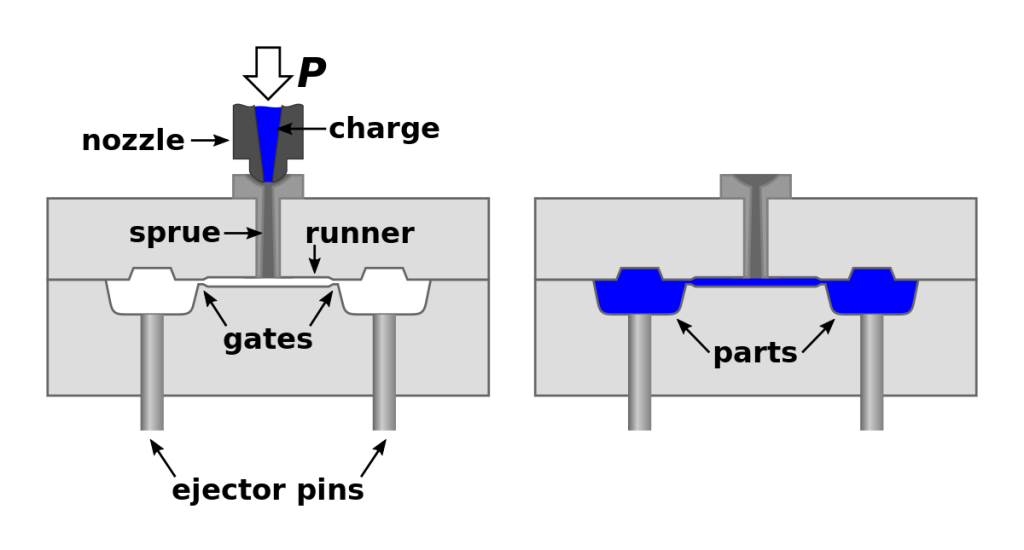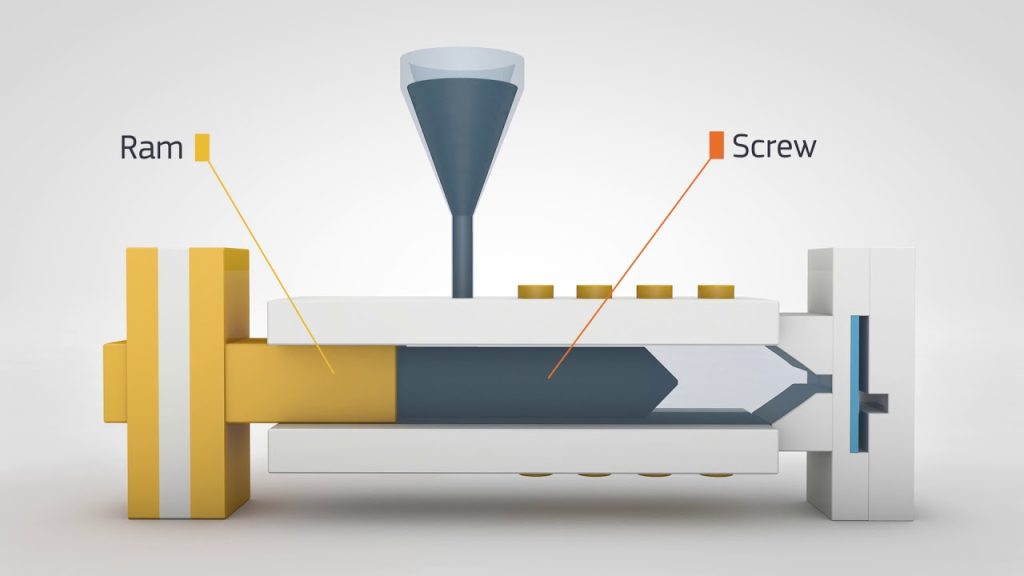Table of Contents
Injection molding is a manufacturing process that is widely used to produce a variety of plastic parts. The process involves injecting molten plastic into a mold, which is then cooled and solidified to form the final product. But have you ever wondered how these molds are made? In this article, we will explore the various steps involved in making an injection mold and the materials used in the process.
Creating an injection mold is a complex process that requires precision and expertise. From designing the mold to selecting the right material, every step is critical to ensure a successful outcome. In this guide, we will take a closer look at the different stages of mold making and provide a clear understanding of the techniques and technologies used to create high-quality injection molds.
How Are Injection Molds Made?
Injection molding is a manufacturing process used to create parts by injecting molten material into a mold. The process is widely used in industries such as automotive, medical, and consumer goods. But have you ever wondered how injection molds are made? In this article, we’ll take a closer look at the process of making injection molds.
Designing the Mold
The first step in making an injection mold is designing the mold. This process involves creating a 3D model of the part you want to produce, which is then used to design the mold. The mold consists of two halves – the cavity and the core. The cavity is the part of the mold that forms the outside shape of the part, while the core forms the inside shape.
Once the mold design is complete, it is sent to a mold maker who uses computer numerical control (CNC) machines to create the mold. The mold maker uses a variety of tools and techniques to create the mold, including milling, turning, and electrical discharge machining.
Making the Mold
The next step in making an injection mold is to create the mold itself. This process involves using a variety of materials, including steel, aluminum, and copper alloys. The mold is created by first machining the core and cavity halves separately, and then fitting them together.
Once the mold is complete, it is tested to ensure that it can produce high-quality parts. Testing involves injecting molten material into the mold and examining the resulting parts for defects such as warping, sinking, and voids.
The Injection Molding Process
Now that the mold is complete and tested, it’s time to start the injection molding process. The process begins with the mold being heated to the appropriate temperature. The material to be molded is then loaded into the injection molding machine, which melts the material and injects it into the mold.
The material is then allowed to cool and solidify, at which point the mold is opened and the part is ejected from the mold. The process is repeated until the desired number of parts is produced.
Benefits of Injection Molding
Injection molding offers several benefits over other manufacturing processes. One of the biggest benefits is the ability to produce large quantities of high-quality parts quickly and efficiently. Injection molding is also highly repeatable, which means that each part produced will be identical to the last.
Another benefit of injection molding is the ability to use a wide variety of materials, including plastics, metals, and composites. This allows manufacturers to choose the material that best suits their needs.
Injection Molding vs Other Manufacturing Processes
Injection molding is just one of many manufacturing processes available. Other processes include machining, casting, and forging. Each process has its own advantages and disadvantages, and the best process to use depends on the specific needs of the project.
One advantage of injection molding over other processes is the ability to produce complex parts with intricate details. Injection molding is also more efficient than other processes, as it produces less waste and requires less post-processing.
Conclusion
Injection molding is a complex process that involves designing and creating a mold, testing the mold, and then using the mold to produce high-quality parts. The process offers several benefits over other manufacturing processes, including the ability to produce large quantities of identical parts quickly and efficiently.
If you’re in need of high-quality parts for your project, injection molding might be the right choice for you. With its ability to produce complex parts with intricate details and its efficiency, injection molding is a reliable and cost-effective choice for many applications.
Frequently Asked Questions
Injection molding is a manufacturing process that creates plastic products, parts, and components. It involves melting plastic pellets and injecting them into a mold to create a specific shape. In this section, we will answer some of the most common questions about how injection molds are made.
How are injection molds made?
Injection molds are typically made from metal, usually steel or aluminum. The process begins with a design for the mold, which can be created using CAD software. Once the design is complete, it is used to create a mold cavity using CNC machining.
The mold cavity is then polished and finished to ensure that the final product has a smooth surface. The mold is then attached to an injection molding machine, where plastic pellets are melted and injected into the mold. Once the plastic has cooled and solidified, the mold is opened, and the finished product is ejected.
What materials are used to make injection molds?
Injection molds are typically made from steel or aluminum. Steel molds are more durable and can withstand high temperatures and pressure, making them suitable for high-volume production runs. Aluminum molds are less expensive and can be used for prototyping or low-volume production runs.
Other materials, such as copper, brass, and beryllium-copper alloys, can also be used for injection molds in certain applications. However, these materials are less common due to their high cost and limited availability.
How long does it take to make an injection mold?
The time it takes to make an injection mold depends on several factors, such as the complexity of the design, the size of the mold, and the material used. Generally, it can take anywhere from several weeks to several months to create a mold.
The time it takes to create a mold can also be affected by any changes or modifications that need to be made to the design during the manufacturing process. This can add time and cost to the production of the mold.
What factors affect the cost of an injection mold?
The cost of an injection mold can vary depending on several factors, such as the size and complexity of the mold, the material used, and the number of cavities in the mold. Generally, larger and more complex molds will cost more than smaller and simpler molds.
Other factors that can affect the cost of an injection mold include any special features or requirements of the mold, such as the need for hot runners or inserts, as well as the location and experience of the manufacturer.
How long do injection molds last?
The lifespan of an injection mold depends on several factors, such as the material used, the number of cycles the mold is used for, and the maintenance and care of the mold. Generally, steel molds can last for hundreds of thousands of cycles or more, while aluminum molds may only last for tens of thousands of cycles.
Regular maintenance and cleaning of the mold can help extend its lifespan, as can using the mold within its recommended operating parameters. Overuse or misuse of the mold can cause it to wear out more quickly, leading to defects in the final product and the need to replace the mold sooner.
In conclusion, injection molds are a crucial component to the manufacturing process of plastic products. The process of making injection molds is complex and requires a high level of expertise and precision. From designing the mold to selecting the right materials, every step is carefully considered to ensure a successful outcome.
The use of injection molds has revolutionized the production of plastic products. With the ability to create complex shapes and designs, manufacturers are able to produce high-quality products at a faster rate. The durability of injection molds also makes them a cost-effective solution for long-term production needs.
As technology continues to advance, the process of making injection molds will continue to evolve. New materials and manufacturing techniques will emerge, providing even more opportunities for innovation and growth. It is clear that injection molds will remain an integral part of the manufacturing process for years to come.
Request a quote today!
[contact-form-7 id="1578" title="Contact form"]
Please compress the file into a ZIP or RAR file before uploading. Alternatively, send through your RFQ by email.
enquires@unitymanufacture.com





